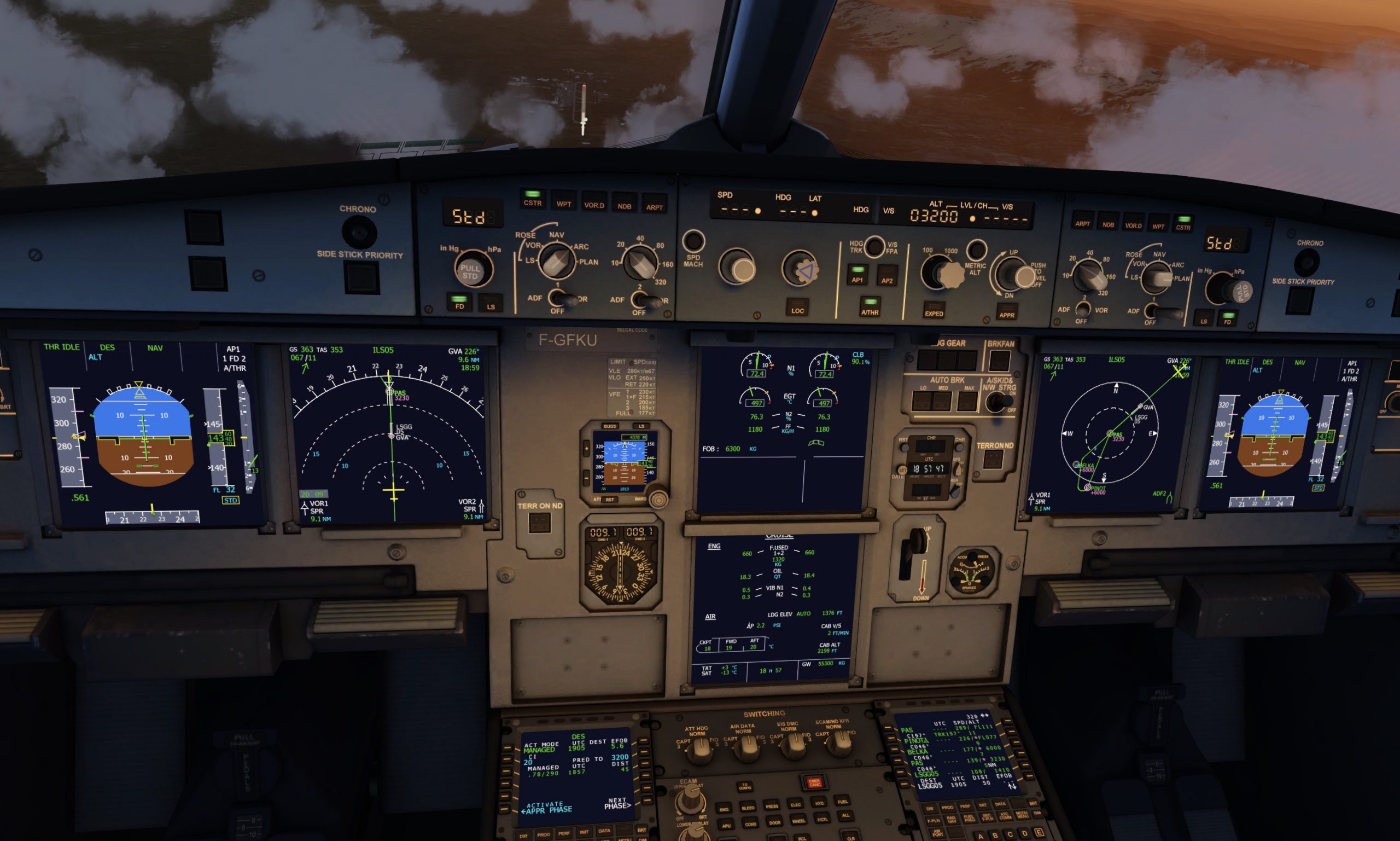By 'heavies' I mean anything 737 and above in weight (not strictly the definition). I am about to do some simulated training using Aerofly 2021 (will get 2022 next month), no more external views for me :), will be sitting in the right hand seat, and will refer to the excellent resource on the A320 online in French (I speak French but a non-French speaker can put each paragraph through an online translator if they wish to read it
which can be found:

The circuit training description is what originally attracted me to this website resource.
Have just discovered the cross wind modelling in this sim landing at Denver (KDEN) and am super impressed. With the copilot flying you can be fooled into thinking the modelling is not there, but try it manual and you will discover it is! Better still try landing the cessna with max wind settings (30+ knots) and a 90 degree crosswind.
Not sure what others think of the cross wind modelling of this sim, but it was the reason for my original attraction to Aerofly 1 years ago. Flying a small GA with one wheel touching down is an experience as close as it gets.
I find the wind deceptive. Most probably don't play with it, or happen to have it blowing down the direction of the runway and hardly notice it, or let the copilot do the work, but I have renewed respect for this sim since trying to land a 737 on max settings yesterday.Its a real challenge to do properly on the centreline, especially once the wheels hit the runway and all hell can break loose. Kicking-out the crab is a real experience. To do all this on a humble old ipad is simply amazing. Have also new respect for the copilot - he makes it look easy.
THE HEAVIES
For years I have sought "the numbers" or circuit training details of heavy jets, after seeing a video years ago of a Cathay 777 doing circuits and touch and go's at low level. Without realising it I had the details for the 747-400 all the time in a book in my library by Davies - Handling the Big Jets.
A weight of 500,000 lbs (227 ton) is given as an ideal weight for approach speeds at flap 20, gear down, 1000 ft above ground level. This is obviously a circuit training description for crew - exactly what I saw on that video years ago. I find the 227 TOW an interesting weight now as it coincides with the Aerofly 747 without payload (EOW 185 ton+ 40 ton fuel). If the Aerofly 747 has no payload they have configured the aircraft at the exact weight suitable for circuit training with 4 hours of fuel onboard (40 ton). Amazing. I can only presume all of the jets are similary configured in this sim (737, A320, 777).
I would have presumed flap 10, based on my flying of the Aerofly 747, but Davies is an authority on this subject so flap 20 must be correct for this aircraft on approach at light weights. Presumably its a flap 10 takeoff and flap 20 approach?, or a flap 20 takeoff and approach?.
For anyone who has witnessed a heavy do a touch and go circuit you will be amazed at how tight the circuit is, and the very low level - not at all like a normal approach by a heavy jet at an airport we see everyday.
INCIDENTALLY - for those 'afraid of flying' passengers - the reason that the circuit is so tight is because of the low altitude of 1000 ft AGL (seems 1500 ft is used on Airbus). Most people don't realise that the height of aircraft (and distance from an airfield - the circuit pattern) is determined by an ability to make a runway with no engines running at all times in the flight (though a dead stick in a heavy is mostly theoretical rather than actual - rarely ever been done - only on simulators). EXCEPT after V1 and on the initial climb out - a complete engine loss would not end well! (my old instructor on the piper warrior told me that he would either do a 180 degree return to the runway if enougth height allowed it or land wherever you can in front of you- not something you can do in a heavy).
But other than that extreme case at any time you are flying you can rest assured that a complete engine loss does not mean death to all passengers - the civil aviation authorities have thought of everything ahead of time. The single most dangerous activity it would seem in aviation is flying small aircraft at low levels - height is everything when you lose power - these guys have to improvise and know how to land on anything available - even roads. At least this is my understanding as a sim pilot, not real.
I believe that the drama of the BA 777 that didn't make the runway at Heathrow years ago after a complete double engine failure was because it didn't make the runway! not that its engines failed as shocking as that is (an impossibility considered by Boeing until after this incident). It should have been able to make the runway without power on approach. Seems something went wrong on short final and it landed on grass in front of the runway before making the runway if memory serves correct. The loss of power must have initially gone unnoticed and they lost precious seconds. That is my take on what happened but I may be wrong.
